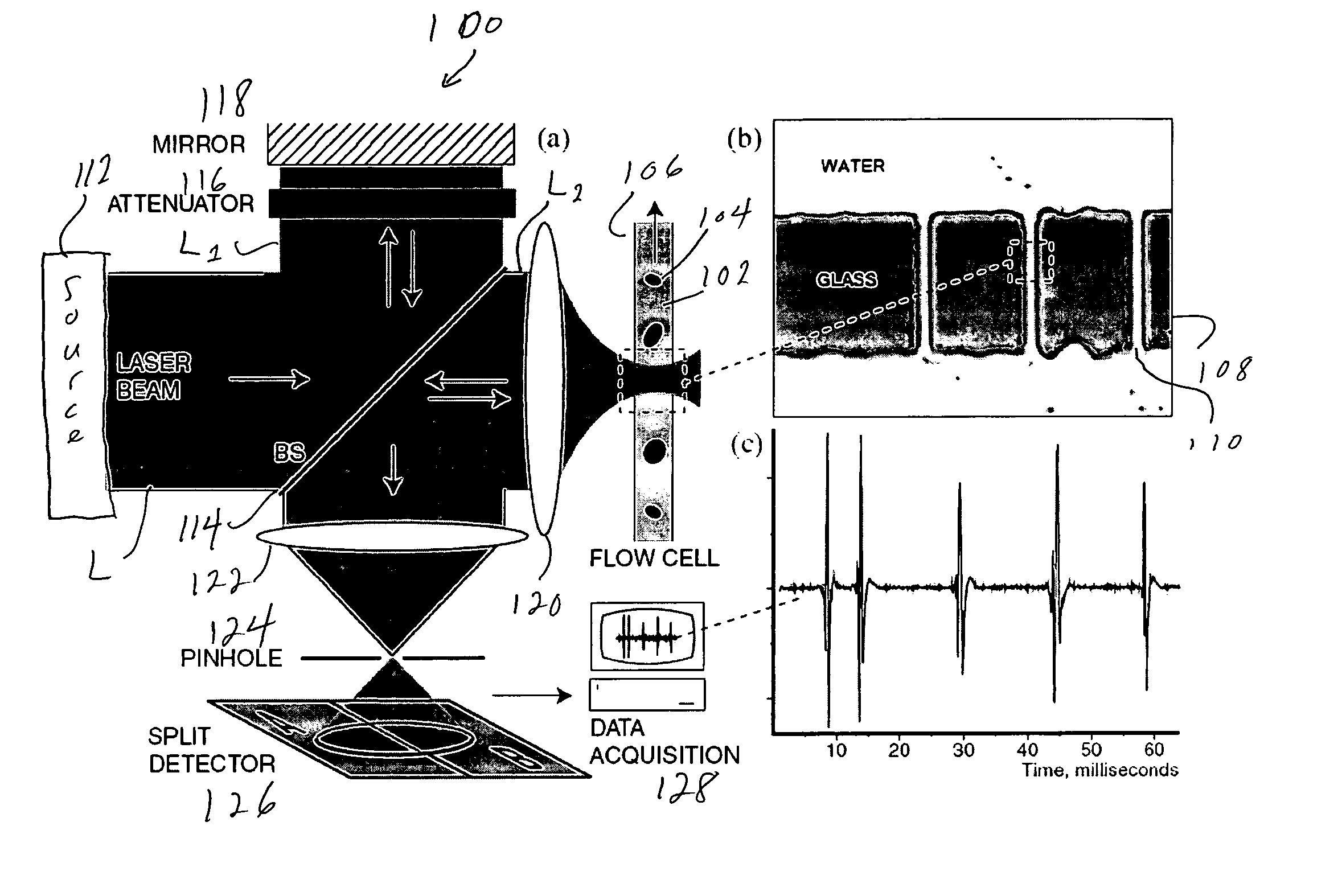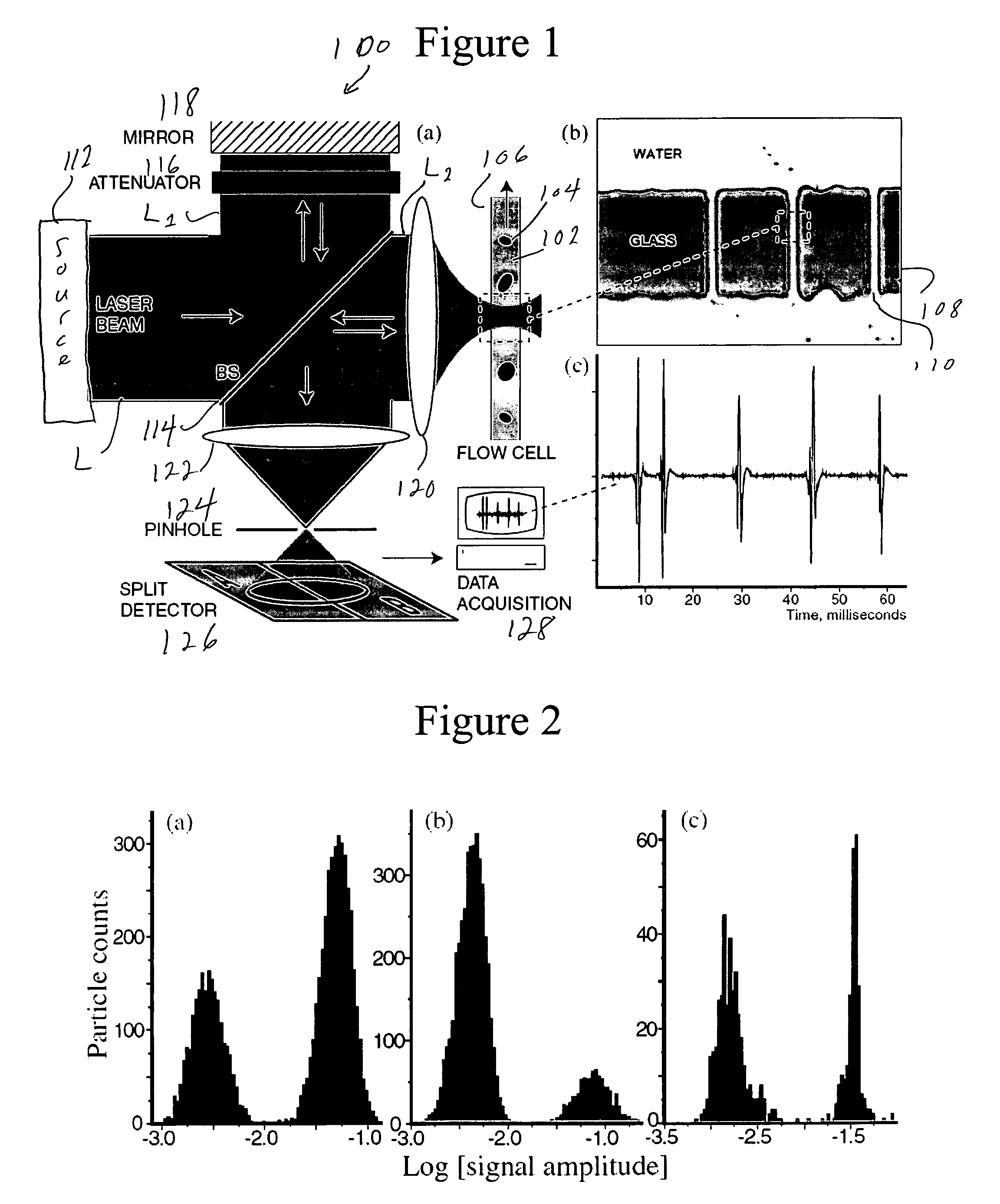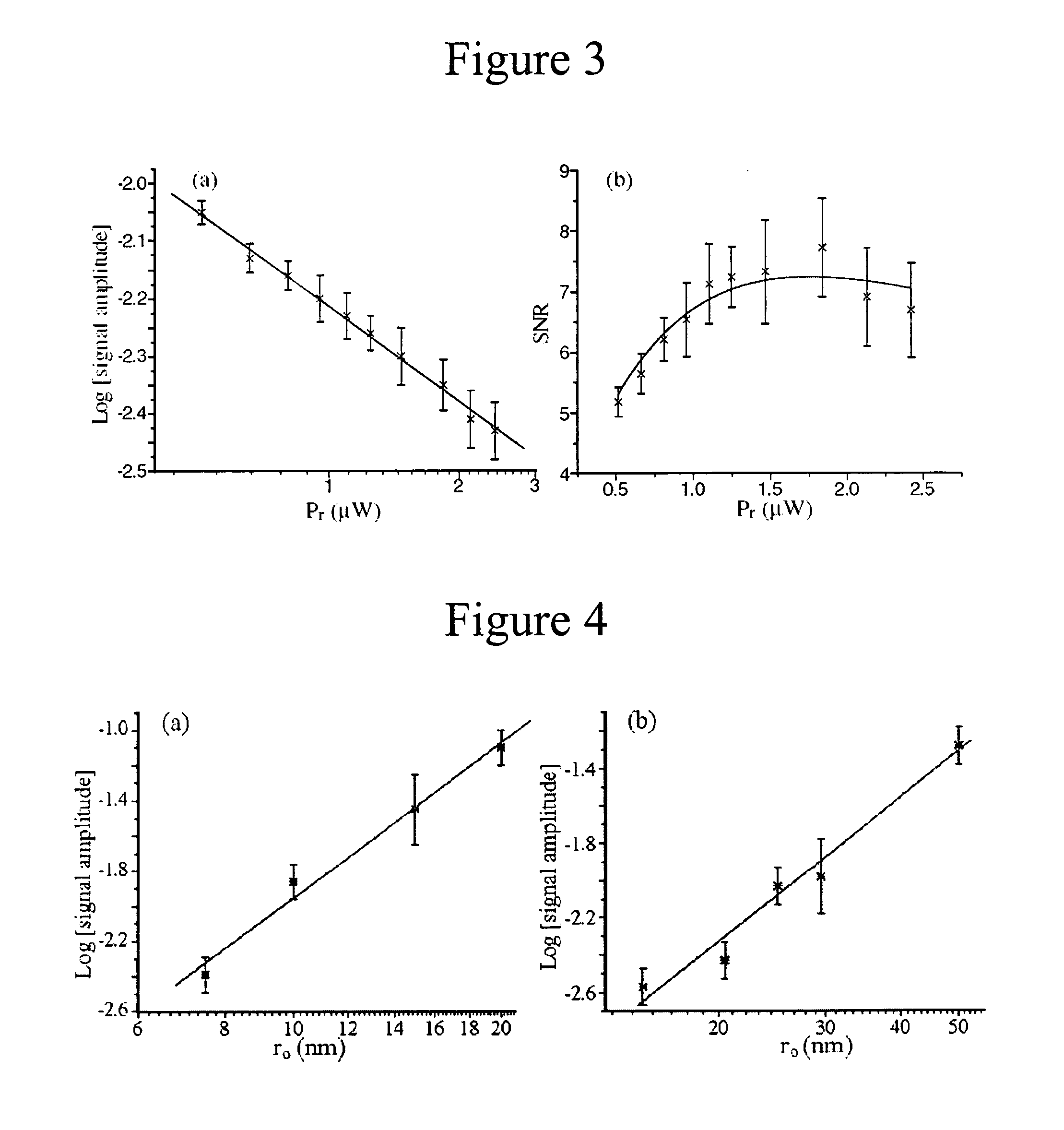Apparatus and method for sizing nanoparticles based on optical forces and interferometric field detection
a nanoparticle and optical force technology, applied in the field of optical force and interferometric field detection, can solve the problems of contamination control of ultrafine particles, difficult detection of nanoparticles, and heritable mutations, and achieve the effect of reducing the number of nanoparticles
- Summary
- Abstract
- Description
- Claims
- Application Information
AI Technical Summary
Benefits of technology
Problems solved by technology
Method used
Image
Examples
Embodiment Construction
[0018] A preferred embodiment of the present invention will be set forth in detail with reference to the drawings, in which like reference numerals refer to like elements throughout.
[0019] The detection scheme is schematically shown in FIG. 1 as 100. Using the electro-osmotic effect, as shown in FIG. 1, part (b), a particle solution 102 containing particles 104 is transported through a microfluidic channel 106. The channel 106 is subdivided by a barrier 108 with various nanoscale channels 110. As shown in FIG. 1, part (a), a laser source 112 emits a λ=532 nm laser beam L, which is split by a 50 / 50 beam splitter 114 into two perpendicular paths L1, L2. One path L1 serves as a reference for later interferometric recombination in a reference arm including an attenuator 116 and a mirror 118, and the other path L2 is focused with an objective lens 120 (NA=1.4) into a single preselected nanochannel. In principle, many channels could be sampled sequentially or in parallel by making use of...
PUM
 Login to View More
Login to View More Abstract
Description
Claims
Application Information
 Login to View More
Login to View More - R&D
- Intellectual Property
- Life Sciences
- Materials
- Tech Scout
- Unparalleled Data Quality
- Higher Quality Content
- 60% Fewer Hallucinations
Browse by: Latest US Patents, China's latest patents, Technical Efficacy Thesaurus, Application Domain, Technology Topic, Popular Technical Reports.
© 2025 PatSnap. All rights reserved.Legal|Privacy policy|Modern Slavery Act Transparency Statement|Sitemap|About US| Contact US: help@patsnap.com



